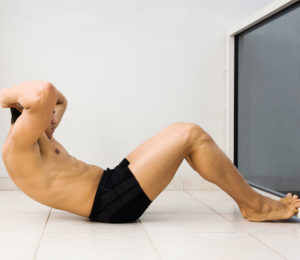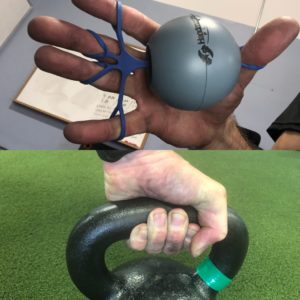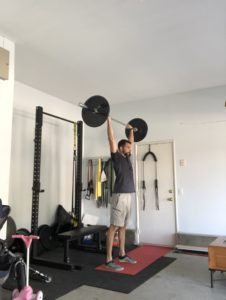 Balance has a number of application in a training program. Most will associate balance with standing on one leg or walking a balance beam. While these are great exercises to include in your plan, this is not the type of balance I am referring to for this purposes of this article.
Balance has a number of application in a training program. Most will associate balance with standing on one leg or walking a balance beam. While these are great exercises to include in your plan, this is not the type of balance I am referring to for this purposes of this article.
Instead I am talking about balance between movement in your training. Everything in moderation is a cliche that many are tired of hearing, yet there is a reason it pops up so much. There must be some truth in moderation and balance in your life.
If you spend all your time at work and none with your family, you will have some issues most likely in your personal life. But your work may thrive. Or if you spend all of your time with your family/friends but little one work, you may not be able to support yourself.
While achieving perfect balance is probably a myth, we should always strive to work on different things in your life.
Getting back to your training, we want to see balance in movements. How many people spend too much time focusing on a particular movement or exercise? It is hard not to refer to the guys in the weight room hitting bench and other chest exercises most days of the week.
Constantly training pushing exercises without pulling is a great way to develop muscle imbalances in your shoulder and poor posture. This will also have a tremendous effect on performance.
Many, I’m sure, have already heard of the push to pull imbalance. That you should probably incorporate 1 pushing for every 2-3 pulling exercises you do. This is mainly because we traditionally spend so much time pushing we need to pull it back the other direction to help with this balance.
This balance will be critical for your shoulder. If we don’t train the muscles supporting these joints appropriately, they will no longer be able to function properly. Which means you cannot function properly.
 Another clear example is how much time some spend with spine flexion exercises, such as the crunch or sit up. Not only can this be too much on the lumbar spine, we see the thoracic spine develop excessive flexion and again poor posture. I’m not saying you can never do a sit up or crunch (while it may not be the best selection), you should at least balance it out with thoracic extension exercises.
Another clear example is how much time some spend with spine flexion exercises, such as the crunch or sit up. Not only can this be too much on the lumbar spine, we see the thoracic spine develop excessive flexion and again poor posture. I’m not saying you can never do a sit up or crunch (while it may not be the best selection), you should at least balance it out with thoracic extension exercises.
For the obstacle course racer, there is a very specific area of training that we often seen trained out of balance. This is all about grip. There are many different ways to train grip strength, but this article is about how you can train for an even better grip by doing the opposite.
The muscles controlling grip need balance just like any other muscles would. When you think of most grip exercises, it involves squeezing or pinching something. These are great for improving strength, but when this is all you focus on, you might be limiting yourself.
This is where we can add some exercises to balance you out. For example, you can perform exercises that work on opening up the hand versus closing it. These muscles that oppose closing the hand need training too.
In fact there, is some research that shows when you train opposing muscles it can actually increase the force production in the agonist muscles. This means by training to open your hand you can have more strength closing your hand. Pretty cool!
This can be a tricky exercise to implement. Simply just opening your hand as wide as you can and holding it for 10-15seconds is a great start. Especially in between sets of traditional grip exercises like farmer carries.
 I am a big fan of using the tool Hand Master Plus. This is a simple tool with small resistance bands to help train these muscles even more.
I am a big fan of using the tool Hand Master Plus. This is a simple tool with small resistance bands to help train these muscles even more.
Not only will this improve your overall grip strength, it will help create better balance in the joints of your hand, which will likely lead to less joint issues down the road.
There is one other exercise on a similar note that I think is worth discussing. Two common OCR exercises we see for improving grip strength are dead hangs and farmer’s carry.
These are again great drills, but often abused if not trained properly. There is one simple exercise you can do to help create better balance with these two exercises.
If you are not familiar with these drills, you need to be. But just in case a dead hang is simply hanging from a bar, like a pull up bar, for time. A farmer’s carry is grabbing weights, like DB’s or KB’s, holding them at your side and going for a walk. You can clearly see how both of these drills can help with your racing performance.
To balance these exercises out, try an overhead hold.
Warning! Make sure you have enough mobility and stability in your shoulder before trying this exercise.

The overhead hold is just like it sounds. You will grab a bar or a weight and simply hold it over your head. Make sure your shoulder is packed. To achieve this position you will pull your shoulder into the socket once the weight is up. Also, make sure to maintain a neutral spine so you are not arching your lower back in order to get the weight up.
I like this exercise because it help create balance, in some way, in both the earlier exercises mentioned. The dead hang is challenging you hand from a bar. Holding a bar over your head will keep you in the same body position but flip the load. Sure you can do a handstand too, but this will require a lot more training to get the hang of.
With the farmers carry, you have the weight pulling down on your shoulder as you walk. With the overhead hold or carry you again now flip the loading on the shoulder to create balance.
There you have it. Better balance in your training and giving you a better more effective grip. Give some of these a try in your program for balance.
Mike Deibler MS, CSCS, SGX
OCR Underground



